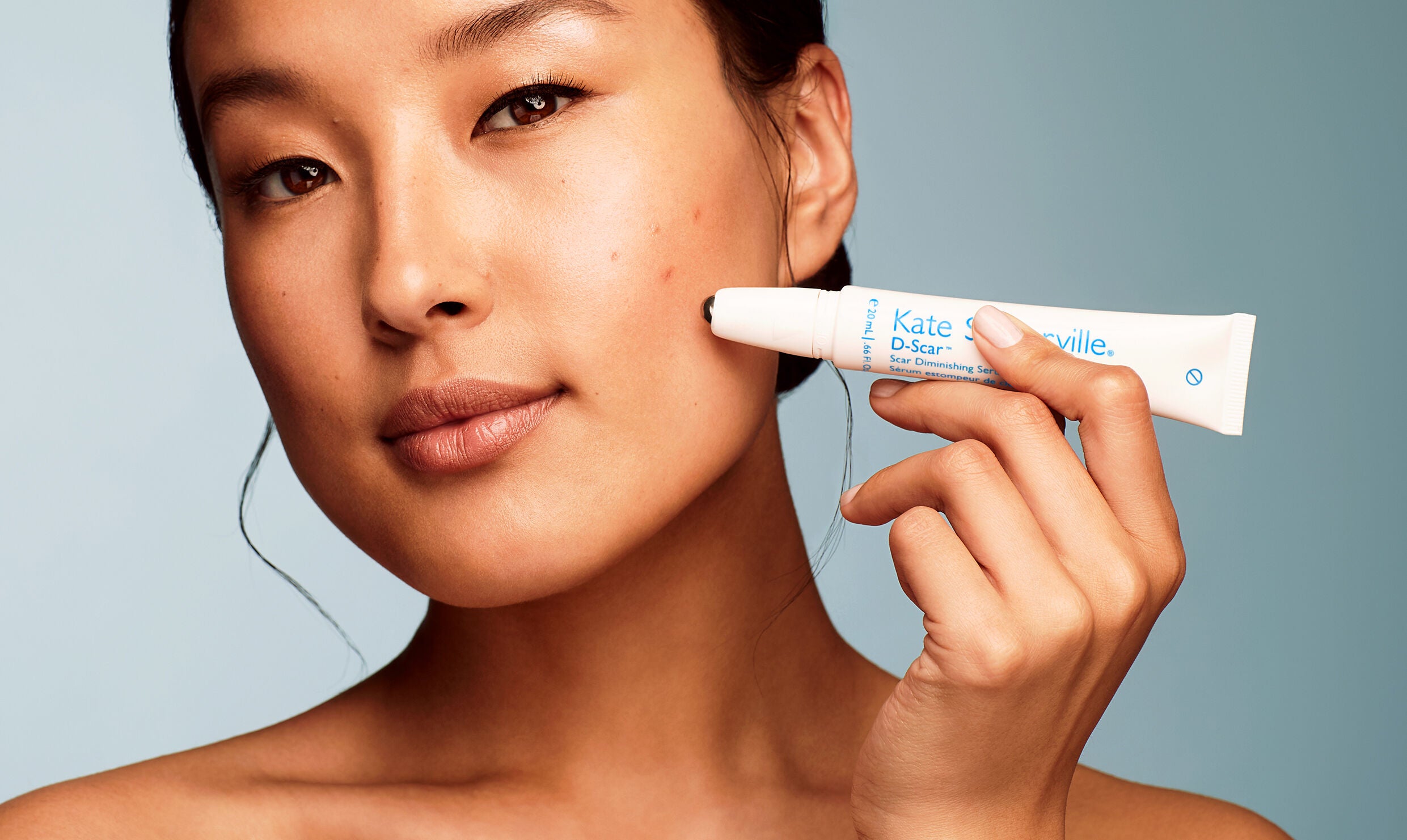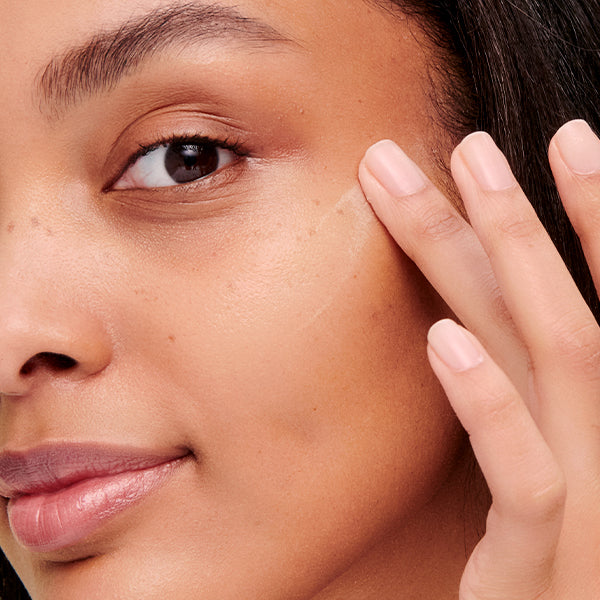
You want to achieve flawless, even skin tone but nothing seems to be working. A wide range of factors such as age, genetics, environment, and lifestyle choices can all impact achieving an even skin tone. Many people struggle to achieve an even complexion after making a few changes to their skin care routine. We talked to our Skin Health Experts to get the low down on evening out skin tone and laid out tips and tricks for achieving a glowing, even complexion. First, it’s important to understand the possible causes of an uneven skin tone.
What Causes Uneven Skin Tone?
Uneven skin tone is a common issue that many people struggle with, affecting people all across the globe. These are not all the causes of uneven skin tone, however, the factors below are well known culprits:
Sun exposure
Genetics
Aging
Certain medications.
It’s worth noting that certain skin types are more prone to uneven skin tone than others. People with darker skin tend to struggle more when it comes to dark spots because the extra melanin production triggered by hormones or trauma makes dark skin more susceptible to hyperpigmentation.
There are ways to reduce the appearance of uneven skin and skin discoloration by making a few changes to your skincare routine. Here are a few tips on how to even skin tone by not only attempting to reduce uneven skin tone in the short term, but also ways to prevent the chances of more dark spots in the future.
How To Even Skin Tone
1) Exfoliate Regularly
When working to fix uneven skin tone, adding in an exfoliating product to your skincare routine is crucial to see success. Exfoliating aids in removing dead skin cells that can clog pores, cause acne, and dark circles that make skin tone uneven. Additionally, it promotes cell renewal which helps to leave the skin softer and more radiant. There is a balance when it comes to exfoliating. Even though it’s an important step to add to your routine, it’s important not to over-exfoliate. Over exfoliation could lead to dryness or even more breakouts. That is why choosing the right exfoliating face scrubs can be a challenge. We’ve taken the guesswork out by offering a few tips on how to exfoliate based on your skin type.
Exfoliating for Dry Skin:
Look for a skin treatment exfoliant with hydrating components, such as glycerin or lactic acid. A gentle scrub or chemical exfoliant can help reveal a brighter face if your skin is visibly dry and dehydrated. A skincare regimen for dry skin should include products that are both hydrating and gentle on the skin. You want to stick to mild products that won’t strip your skin of natural moisture while also clearing away your dead skin cells.
Exfoliating for Oily Skin:
Small-bead scrubs or chemical exfoliants containing alpha-hydroxy acid can help eliminate surplus oil and reduce the visibility of large pores. Sometimes, having oily skin can lead to frequent breakouts in which case you could benefit from an acne treatment skin care routine which can include products ranging from cleansers, moisturizers, and targeted acne treatments.
Exfoliating for Sensitive Skin:
Skincare products for sensitive skin are formulated using gentle ingredients specifically for skin that is easily irritated. When it comes to exfoliating, choose a gentle exfoliant like a cream-based scrub or lactic acid resurfacing treatment for those with delicate skin. Avoid using any rubbing motion, and always try a new product on a small area first.
You can significantly improve how to even skin tone and decrease uneven skin tone by exfoliating frequently and using the best skincare products for your skin type. Calm and hydrate your skin after exfoliating by using a moisturizer and you’ll be well on your way to attaining a flawless complexion.
2) Choose the Right Moisturizer
Choosing the correct moisturizer can help to address skin pigmentation and uneven complexion. A great face moisturizer hydrates your face throughout the day if used during your AM and PM skin care routine. In the morning, a moisturizer can also be used as a primer for makeup application. At night, a moisturizer can help nourish and re-hydrate your face by locking in moisture. When choosing any skin care product, you should think about your skin goals and your skin type. A light, oil-free moisturizer that won’t block your pores is an option for those with oily skin. For dry skin texture, a thick, creamy moisturizer will keep your skin hydrated and nurtured. We recommend trying new products on small areas of your wrist or neck first so that you can see how your skin responds, especially if you’re unsure of your skin type.
Finding a moisturizer with the right ingredients for your skin type is important. When working to brighten skin tone, look for a vitamin C moisturizer or serum– vitamin C has been shown to reduce the look of dark spots by brightening skin and increasing collagen production making it an ideal ingredient to add to your routine. Other than Vitamin C, some of the best ingredients for dark spots include glycolic acid and niacinamide.
3) SPF, SPF, SPF!
No matter what your skin type is, it’s important to protect your skin from the sun’s harmful rays by applying daily SPF into your morning routine. The list of damage caused by overexposure to the sun’s UV rays includes: sun spots, long-term skin damage, redness, discoloration, and even skin cancer. You should always wear sunscreen or use other products with SPF protection if you want to keep your skin glowing, long-term.
For people with acne-prone or sensitive skin, look for sunscreens labeled “non-comedogenic,” which means they are formulated specifically to not cause breakouts. Avoid sunscreens with oils or fragrances that may irritate sensitive skin.
When you’re outdoors, wear a wide-brimmed hat and sunglasses for added protection. If you plan on being in direct sunlight for an extended period of time, consider wearing a rash guard shirt or a long-sleeved shirt and pants.
Exfoliating regularly, using the right moisturizer and protecting your skin from sun damage are only three of the steps you can take to help your skin look its best and to help achieve even skin tone.
4) Be Consistent with Your Skincare Routine
Having a consistent skincare routine is key to achieving an even skin tone. A simple daily regimen can make a huge difference to keeping your skin healthy and achieve an even skin tone. We recommend starting with at least these four products to include in your daily routine:
Cleanser: A gentle cleanser in the morning and at night helps to remove dirt, excess oil, and impurities that can accumulate on the surface of your skin throughout the day. This creates a clean slate for the rest of your skincare routine.
Toner: Following your cleanse, a toner can help restore your skin’s pH balance.
Moisturizer: Apply a moisturizer to keep your skin hydrated.
SPF: Even on cloudy days, applying sunscreen daily should be included in your routine. We recommend SPF following your moisturizer and before applying any makeup. Sun exposure can damage the skin and produce excess melanin that contributes to an uneven skin texture and skin tone.
Exfoliating can be incorporated into the routine on a weekly basis. You should only exfoliate once or twice a week. Exfoliating can help remove dead skin cells that may be leading to dull complexion and causing uneven skin tone.
Maintaining and prioritizing a consistent skincare routine can help your skin stay healthy with an even tone. Everyone’s skincare routine can and should look different. Products with fragrances or harsh ingredients could irritate or dry out your skin. Look for skin care products that are going to be the best option for your skin type.
Enjoy beautiful, even, glowing skin that is free of blemishes and discoloration when you put time and attention toward your skincare routine. At Kate Somerville, we want you to find skin care products that suit your skin goals. From our EradiKate line to our ExfoliKate line, our custom-designed formulas are designed to help your skin restore its natural complexion for a youthful glow.
Sources:
Kang HY, Lee JW, Papaccio F, Bellei B, Picardo M. Alterations of the pigmentation system in the aging process. Pigment Cell & Melanoma Research. 2021;34(4):800-813. doi:https://doi.org/10.1111/pcmr.12994
Hyperpigmentation: Why It Happens and How to Treat It Based on Your Skin Tone. Dermatology Physicians Group Chicago Illinois. Published November 15, 2019. Accessed March 31, 2023.
Hyperpigmentation: Why It Happens and How to Treat It Based on Your Skin Tone
Rattanawiwatpong P, Wanitphakdeedecha R, Bumrungpert A, Maiprasert M. Anti‐aging and brightening effects of a topical treatment containing vitamin C, vitamin E, and raspberry leaf cell culture extract: A split‐face, randomized controlled trial. Journal of Cosmetic Dermatology. 2020;19(3):671-676. doi:https://doi.org/10.1111/jocd.13305
DeAngelis RT, Hargrove TW, Hummer RA. Skin Tone and the Health Returns to Higher Status. Demography. 2022;59(5):1791-1819. doi:https://doi.org/10.1215/00703370-10191675






